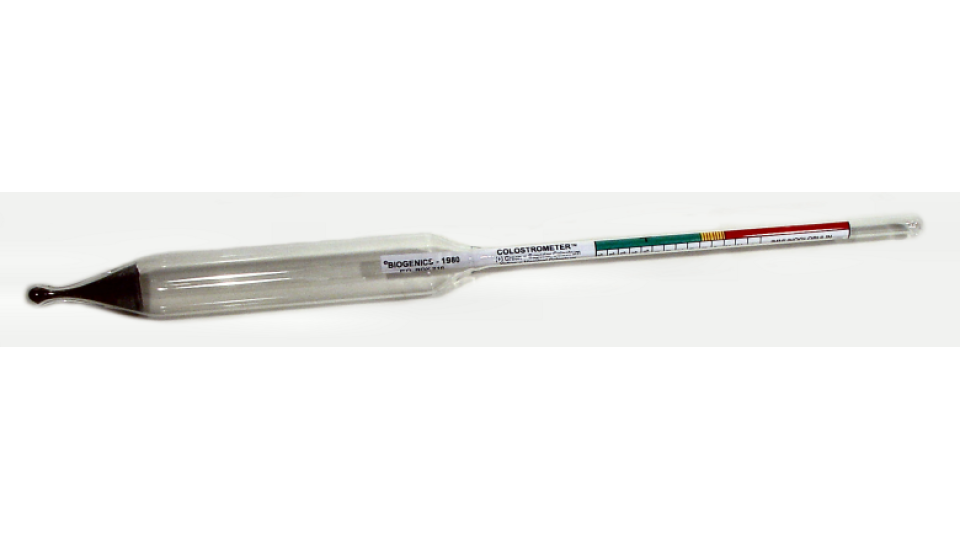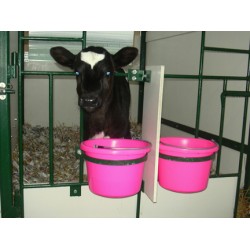Getting quality colostrum from a dam and into a calf as quickly as possible after calving has a major impact on replacement heifer growth, fertility, milk production and rearing cost, speakers from the US, UK and Netherlands told producers at the ForFarmers’ Youngstock Conference, Nantwich. Simon Wragg reports.
Colostrum begins deteriorating rapidly from the time of calving, according to US research, with each hour being vitally important in the race to ensure heifer calves get much needed and sufficient antibody protection in the first few hours of life.
Within six hours of calving, a cow’s colostrum loses 18 per cent of its antibodies rising to 27 per cent by 10 hours and 33 per cent by 14 hours, explained Sam Leadley, calf and heifer management specialist at Attica Veterinary Associates, New York State, USA.
“It is a race. A calf loses 40 per cent of its ability to absorb antibodies within tshe first six hours of life. So you can imagine the calf born at 9pm at night and not found until the morning is already at risk. So what are you going to do first? Get your cows milked or see to the calf?”
As heifer calves are the future of all dairy herds they should take priority but rarely do, he said. “Let me tell you I spent 12 years raising calves and have made every mistake in the book. But I like to think I learned from each one,” he told around 200 delegates including students, producers and advisers.
“Your aim should be to feed 200g of IgG [the solid component of colostrum including antibodies] – typically four litres by volume – within that first six hours of a calf’s life. But make sure colostrum is of good quality. Use a colostrum meter if you have one. Surveys in the US found 30 per cent of cows have colostrum containing less than 50g IgG/litre.
Nursery bottle
“Where at all possible use a nursery bottle rather than tube. The sucking action sends a signal to the calf’s brain to release the hormone which forms the oesophagal groove ensuring colostrum bypasses the rumen and goes straight to where it can be absorbed.
“If you tube a calf the rumen will typically take 700ml before any spills over into the lower intestine. And remember the stress of a hard or difficult calving will reduce the efficiency of antibody absorption so tube it straight away if that suits,” said Dr Leadley.
He warned producers of the risk a cow’s teat poses to the newborn calf. The stubborn dirt ring around the base of the teat must be removed before suckling or milking, he said. “Otherwise what you are giving the calf is bacterial soup.
“Samples of colostrum taken from ordinary (US) dairy farms showed 45 per cent had bacteria levels sufficient to make a calf sick. Keep it fresh. If it is not going to be fed straight away chill it down to below 16degC within 20 minutes of milking the cow to preserve quality. You can speed up the process by placing ice-filled clean jugs within the colostrum or placing the colostrum jug in a bucket of iced water. Do not rely on a fridge to do it all for you – it will take too long.”
Pasteurisation was also useful helping kill harmful bacteria such as those linked to Johne’s and salmonella without harming antibodies but it differs from the technique for liquid milk, he warned.
“A calf can suckle its dam to get colostrum but you need to allow 30 minutes observation time to ensure teat ends are clean and sufficient volume is taken. It still carries a higher risk of disease transfer affecting growth and leading to higher mortality.”
Achieving good calf growth rates
Ensuring heifer calves achieve good growth rates in the first weeks of life has a major impact in first lactation yield and the recovery of rearing costs estimates at £1,185, Netherlands-based ForFarmers’ youngstock specialist Armanda Boersma told delegates.
Providing four litres of quality colostrum in the first six hours post-calving reduced calf mortality to 4 per cent. This rose to 8 per cent between seven and 12 hours and 18 per cent after 25 hours, she explained.
The company’s VITA heifer-rearing programme for dairy clients suggests heifer calves achieving an average live weight gain of 700g per day by two weeks old produced 200kg extra milk in the first lactation. This rose incrementally to 900kg extra milk for those topping 1kg/day.
“Where replacement heifers are out at grass we offer minerals, keep use of artificial fertiliser down and have to remember grazing suited to the dairy cow may be too high in protein for the heifer.”
Sound feet key to profitable production
With 400 litres of milk lost for each case of lameness, making sure heifers developed sound feet prior to calving was essential for profitable milk production, warned vet Roger Blowey.
“At calving, horn growth almost stops while sole wear increases due to heifers standing longer on concrete waiting to be milked. As heifers find there spot in the social hierarchy they will face about 240 challenges a day – some confrontational – which increase risk of damage to the foot.”
His heifer-rearing utopia would see cubicle housing introduced up to late pregnancy. Heifers should join dry cows in moving through the parlour and a footbath twice daily to get used to both routine and walking on smooth concrete surfaces. Post-calving, heifers should form a separate group and nutrition should ensure sufficient biotin and zinc is available for sound foot development, he suggested.
Conference quotes
“Bacteria in colostrum which is allowed to stay warm will double every 20 minutes and believe me bacteria do not run out of food.”
Heifer specialist Sam Leadley
“You would not consider dipping teats just twice or three times weekly so why not run (milkers) through a footbath daily?”
Vet Roger Blowey
“Have a simple chart telling you how much replacer powder is needed for each volume of feed needing to be mixed and use a temperature controlled tap for uniform feed.”
Adviser Armanda Boersma
“Do not rush; aim to weigh heifers every three months to monitor the effect of changing nutrition.”
Rachael Kennerley, ForFarmers’ Heifer Development Partnership
“We are now starting to predict what impact improving heifer rearing will have in mature lactations using a simple one-page report showing producers progress they have made.”
Vet Stuart Russell






